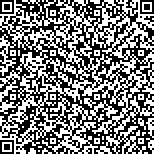|
| 引用本文: | 于新生,阎子衿,朱明亮,李 栋,姜子可,崔尚公.自主式深海海底溶质通量原位观测站研究进展[J].海洋科学,2017,41(6):150-161. |
| |
|
| |
|
|
| 本文已被:浏览 3943次 下载 1942次 |

码上扫一扫! |
|
|
| 自主式深海海底溶质通量原位观测站研究进展 |
|
于新生1,2, 阎子衿1, 朱明亮3, 李 栋4, 姜子可1, 崔尚公1
|
|
1.中国海洋大学 海洋地球科学学院;2.海底科学与探测技术教育部重点实验室;3.中国科学院海洋研究所;4.中国科学院烟台海岸带研究所
|
|
| 摘要: |
| 针对深入了解深海海底界面的物理、化学和生物动态变化过程及机制的观测需求, 综述了自主式海底观测站(着陆器, lander)在深海海底溶质通量监测的研究进展。探讨了海底观测站的设计与实施技术, 分析总结了深海自主式原位观测站在沉积物-水界面化学组分通量的观测机理, 讨论了自主式海底观测站的国内外发展现状。自主式海底观测站具有可灵活机动选择观测地点、操作简单、便于多参数综合测量的特点, 为获取深海海底长时空尺度综合参数资料提供了有效的技术支撑。根据目前深海生物地球化学循环研究特点, 提出了自主式海底观测站面临的问题与发展建议。 |
| 关键词: 深海海底 原位观测 溶质通量 自主式海底观测站 生物地球化学 |
| DOI:10.11759/hykx20161212001 |
| 分类号: |
| 基金项目:国家自然科学基金项目(41176089, 41176078); 国家“863”计划(2012AA09A20103, 2009AA09Z201) |
|
| Review of seabed landers for monitoring solute fluxes in deep sea |
|
YU Xin-sheng,YAN Zhi-jin,ZHU Ming-liang,LI Dong,JIANG Zi-ke,CUI Shang-gong
|
| Abstract: |
| To understand physical, chemical, and biological transportation mechanisms across the deep sea floor has been a major challenge in deep sea research. Lander equipment can be deployed from a ship and sink by its own gravity through the water column. Once it has landed smoothly on the sea floor, the lander can conduct a variety of sea-floor measurements and experiments and bring samples and collected data back to the surface. In this paper, we provide current information on benthic landers designed to monitor the biogeochemical processes of the deep seabed. We discuss applications of these systems along with their associated advantages and disadvantages. |
| Key words: deep seafloor, in-situ devices, solute flux, benthic lander, biogeochemistry |
|
|
|
|
|
|
